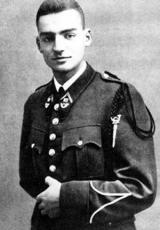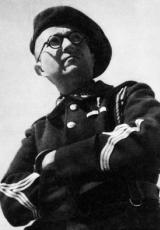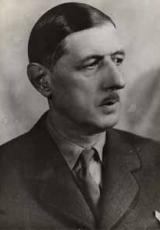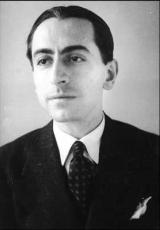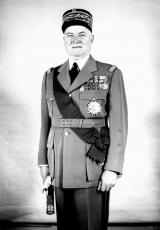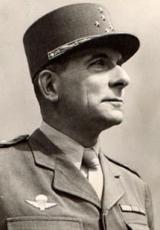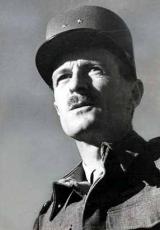L'année 1944

Corps 1
Out of the whole of the second world war, 1944 was certainly the decisive year, as it saw the powers of the Axis retreating along all fronts. As far as France was concerned, the renaissance of political and social life accompanied the military liberation of the country. The Allies now had the airborne capacity to directly strike Germany, which was subjected to large-scale raids intended to demoralise the people and neutralise its military resources. For their part, the Soviets invaded Poland and seized back Leningrad. The campaign in Italy was carried out with efficiency by the Allies: General Juin's French troops took control of the Garigliano river, before arriving in Rome in June. Things were about to accelerate in July with the failed assassination attempt on Hitler. But the real theatre of operations was to be on French soil.
Corps 2
The military operations
It all began on the 6th June 1944 with the Normandy landings and ended in August with the landings in Provence. Up until May 1945 pursuing the war would be the objective to concentrate energies. The gradual liberation of the country was accompanied by fierce battles and heroic and bloody feats of arms, involving both the regular armies and the Resistance of the home front: the Battle of Normandy, the breach of Avranches, the Battle of the Ardennes, the maquis (Resistance fighters) of Saint Marcel (in the Morbihan) and the resistance of the Glières and Vercors maquis etc. Confronted by such obstacles, German troops engaged in massacres of reprisal on the civilian population: at Ascq, Tulle, Harnes, Oradour and Maillé etc. Executions and assassinations also took place during the chaos of 1944, for which the occupying forces and the Militia were equally to blame: Victor Basch, the Manouchian Group, Jean Zay and Georges Mandel, not to mention the death of Pierre Brossolette. The 2 culminating events were the liberation of Paris and the taking back of Strasbourg by the 2nd DB.
The restoration of political life
As the country was gradually liberated, the French people looked to recreating their political institutions and re-establishing the country's legal and economic framework. The movement was twofold: it was both inspired by the Resistance on the home front and directed by General de Gaulle, anxious to re-establish republican rule as quickly as possible in order to avoid an allied military administration and to prevent the Communist Party from taking control of the new institutions. From January onwards, the United Resistance Movements (Mouvements Unis de Résistance or MUR) brought together several other movements to form the National Liberation Movement (le Mouvement de Libération Nationale or MLN); at the Brazzaville conference, de Gaulle examined future relations between Metropolitan France and the colonies; the creation of the French Interior Forces (les Forces Françaises de l'Intérieur or FFI) in February allowed the regrouping of the various armed branches of the Resistance.
The National Council for the Resistance (le Conseil National de la Résistance or CNR) adopted a programme of action intended to be implemented once France was liberated. With the same intention, an order of the French Committee for National Liberation (Comité français de libération nationale or CFLN) defined the conditions for re-establishing democracy following the Liberation: it was groundbreaking in planning to grant women the right to vote. The CFLN became the Temporary Government for the French Republic (le Gouvernement provisoire de la République Française or GPRF) and throughout the year a series of measures was rolled out, leading to the re-establishment of political life: [list]Order re-establishing the union organisations dissolved in 1940; [list]Order of the GPRF re-establishing republican legal control (August); [list]The political parties re-emerged as part of the process of reforming the government; [list]Reestablishment of the freedom of the press following a purging process and the maintenance of military censorship; [list]Order establishing the formation of the new consultative assembly (October); [list]Resumption of political life: reforming of popular organisations; [list]Issue of a large loan intended to stabilise the financial situation (November); [list]Extraordinary Assembly of the SFIO; [list]Constitutional Assembly of the MRP (Mouvement Républicain Populaire, the People's Republican Movement); [list]Communist Rally to help in the rebuilding of the country; [list]Start of nationalisation (collieries); [list]Orders to reform health insurance and retirement pensions.
However, several problems led to tensions: the integration of the FFI into the French army was not as easy as the continuing euphoria of victory had led to believe (June); the positions of the PC who wanted to keep systematic control over the actions of the Resistance movement (nomination of representatives, formalisation of political action to be taken along the lines of an insurrection) were not shared by all parties involved in the resistance organisations; the "wild purge" authorised regulations far removed from justice, which accelerated the creation of special law courts (September). The dissolution of the patriotic militia by the government led to protests from the CNR and the PC (October). In order to assert his authority and channel the desire for direct economic and social democracy, General de Gaulle made several visits to the provinces. On an international level, the Bretton Woods financial conference confirmed the dollar as the currency of reference alongside gold. Finally, the legal recognition of the GPRF by the United States, Great Britain and the USSR etc was to involve France's participation in the German settlement when the time came.


